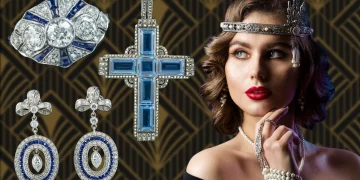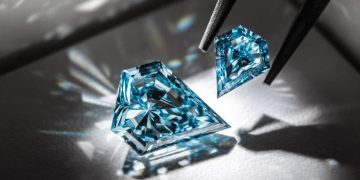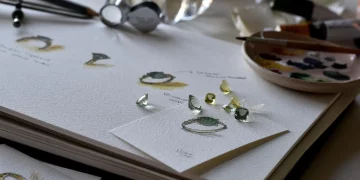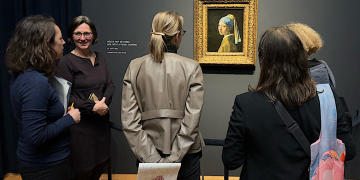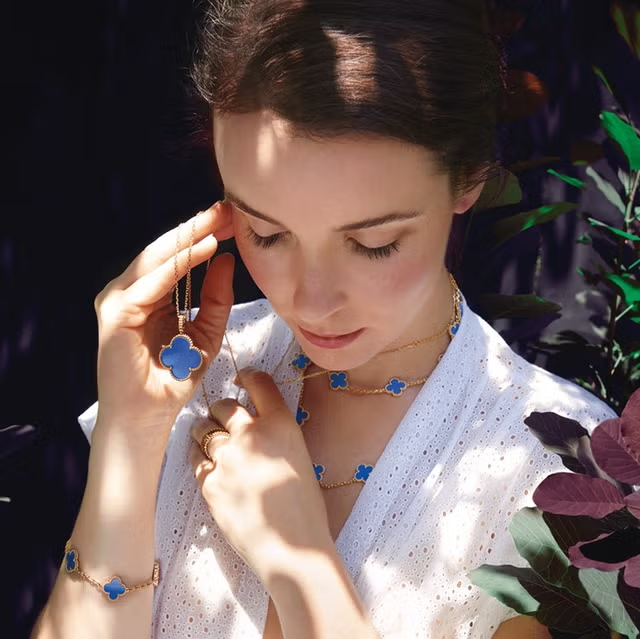Jewelry exhibitions have long been a key venue for showcasing luxury pieces, with rare gemstones often taking center stage. These gemstones—whether diamonds, sapphires, emeralds, or lesser-known, but equally valuable, stones—are not only prized for their beauty but also for their rarity, historical significance, and investment potential. When displayed in prestigious settings, these rare stones have the power to captivate high-end collectors and investors, creating significant buzz and driving interest.
But what is it about these gemstones that make them so irresistible to the elite? How do jewelry exhibitions capitalize on these attractions to draw in high-net-worth individuals, collectors, and investors? In this article, we’ll explore the reasons why rare gemstones featured in jewelry exhibitions become highly coveted, and how exhibitors can leverage these features to appeal to wealthy collectors and investment-minded buyers.
1. Rarity as a Key Selling Point
One of the most compelling reasons that rare gemstones are so attractive to high-end collectors and investors is their rarity. Rare gemstones are often seen as a symbol of exclusivity, something that money can’t easily buy. When visitors see exceptionally rare stones—whether it’s a flawless ruby with an unmatched color, a vintage diamond with a unique provenance, or a blue sapphire with perfect clarity—they are often drawn by the sheer scarcity of the piece.
A. The Concept of Scarcity and Exclusivity
High-end collectors and investors understand that rarity drives value. For example, certain gemstones like Paraiba tourmaline or jadeite are extremely rare and can command high prices due to their scarcity in nature. Exhibiting such rare stones at an exhibition is an irresistible proposition for collectors who seek to own pieces that are not only beautiful but also exceptionally rare. The inherent exclusivity attached to these stones makes them attractive as both luxury items and status symbols.
Exhibitions like The Hong Kong International Jewelry Show or Baselworld often feature rare gemstones that are only available to a select group of buyers. These rare gems are presented in ways that accentuate their scarcity—often paired with information about their origin, cut, and historical significance—making them even more appealing to investors who understand the long-term value of owning such pieces.
2. Gemstones as Long-Term Investments
For many high-net-worth individuals, rare gemstones are not just beautiful pieces of jewelry but also sound investment assets. As global wealth grows, more and more investors are looking for alternative forms of investment beyond stocks, bonds, and real estate. Rare gemstones, particularly those with historical significance and provenance, have increasingly become a desirable option in the investment world.
A. Rare Gemstones as Tangible Assets
Investing in rare gemstones offers a unique opportunity to own a tangible asset that can appreciate in value over time. For collectors and investors, these stones serve as both a luxury purchase and an asset class that can provide financial returns. Jewelry exhibitions provide a platform for these gemstones to be presented in their best light, often with the assistance of gemological certificates that verify their authenticity, rarity, and value.
For example, the Hope Diamond, with its rich history, or vintage diamonds with well-documented provenance, offer buyers the chance to invest in something both beautiful and historically valuable. Exhibitions allow investors to see these gems firsthand, understand their significance, and evaluate whether they align with their investment goals. Such events are also great opportunities for auction houses to showcase rare gemstones that will attract serious bids from high-end investors.
B. The Role of Investment Funds in Rare Gemstones
Certain exhibitions serve as platforms for the emergence of investment funds that focus on rare gemstones. These funds pool resources to acquire valuable gemstones and hold them as long-term investments. By showcasing these gemstone funds and their collections in high-end exhibitions, the industry is able to draw in institutional investors, as well as private collectors, who may be looking for diversification and alternative investments in luxury commodities.
For example, colored diamonds, such as pink diamonds, have historically proven to be a reliable investment, with prices increasing over time. Rare sapphires and emeralds are similarly growing in popularity as investment choices. Exhibitions provide a space for investors to explore and evaluate the potential returns of these types of assets.
3. The Power of Provenance and History
The provenance of a rare gemstone plays a significant role in its desirability and value. Many rare gemstones come with fascinating stories—whether they’re tied to historical figures, royal families, or iconic moments in history. This storytelling aspect is a powerful tool used in jewelry exhibitions to attract high-end collectors and investors who value the heritage and cultural significance of a piece.
A. Connecting Gemstones to Historical Narratives
At prestigious exhibitions, rare gemstones are often accompanied by detailed descriptions of their history, origin, and previous ownership. When a gemstone has an exceptional backstory—such as being part of royalty’s private collection or being tied to a notable historical event—it becomes not just a piece of jewelry, but a tangible link to the past.
For example, the Blue Heart Diamond, once owned by King Louis XVI, is a historically significant stone that appeals to collectors who are keen on pieces with a royal connection. The allure of owning a gemstone with a rich, documented provenance is significant for high-end collectors, as it adds layers of value and prestige to the piece.
B. Art, Heritage, and Investment
As the market for rare gemstones has become more sophisticated, the importance of provenance has grown, with buyers increasingly seeking certified histories that validate the stone’s authenticity. This is why exhibitions often feature authenticity certificates from trusted gemological institutions, as well as curated displays that educate visitors on the cultural and historical significance of the gems they are viewing.
High-end investors are not just looking at the gem itself but the entire narrative surrounding it. This is why luxury exhibitions often emphasize the heritage and provenance of rare gemstones in their displays, making them even more desirable to wealthy buyers who understand the importance of historical context in determining value.

4. Craftsmanship and Uniqueness in Presentation
The presentation of rare gemstones at exhibitions is equally important in attracting high-end collectors and investors. Masterful craftsmanship, coupled with innovative design, can elevate a gemstone’s appeal, turning it into a one-of-a-kind piece. For example, gemstones that are part of limited-edition collections or have been set in unique ways by renowned jewelry designers tend to garner even more attention.
A. Combining Rare Gemstones with Exceptional Design
At exhibitions, rare gemstones are often set into bespoke, one-of-a-kind jewelry pieces created by top designers. When a rare gemstone is paired with a highly skilled designer, the resulting creation becomes a collectible that combines both luxury design and gemstone rarity. These rare pieces are often presented in settings that maximize the visual impact of the stone, making them even more alluring to collectors who appreciate both the artistry and rarity of the piece.
For example, Bulgari, Cartier, and Tiffany & Co. are just a few brands that specialize in turning rare stones into masterpieces of design, adding another layer of exclusivity and collectible value to their offerings. These pieces are often displayed in exquisite settings at exhibitions, where the lighting, interactive experiences, and personalized consultations bring out the full beauty and elegance of the gemstones.
5. The Role of Auction Houses and Exclusive Sales
High-end auctions play a crucial role in drawing in investors and collectors when it comes to rare gemstones. Many of the world’s most prestigious auction houses, such as Christie’s, Sotheby’s, and Phillips, organize exclusive events dedicated to the sale of rare gemstones. These auctions often take place alongside high-profile jewelry exhibitions and offer a unique opportunity for collectors to purchase these gems at a premium price.
A. Competitive Bidding and Investment Potential
At these auctions, rare gemstones are presented in auction catalogs with detailed information about their value, provenance, and significance. Competitive bidding between collectors and investors adds an element of excitement to the buying process, and the potential for the gemstones to appreciate in value over time makes them an attractive investment.
Exhibitions paired with auctions offer a perfect platform for high-end buyers to view rare gemstones before deciding to participate in bidding wars, increasing their likelihood of securing valuable pieces that could provide long-term financial rewards.
Conclusion: The Magnetism of Rare Gemstones at Jewelry Exhibitions
Rare gemstones hold a magnetic attraction for high-end collectors and investors, thanks to their scarcity, historical significance, and investment potential. Jewelry exhibitions provide an ideal environment for showcasing these exceptional gems, enhancing their appeal through masterful presentations, authenticity verification, and exclusive access to high-net-worth buyers.
By leveraging rarity, provenance, and artistic craftsmanship, exhibitions continue to captivate collectors and investors, offering them a unique opportunity to own some of the world’s most coveted and valuable gemstones. As the global interest in rare gemstones grows, these exhibitions will remain a critical platform for connecting luxury consumers with the jewels that will shape their collections and investments for years to come.



